|
Checking Women's Measurements
[Measuring
women] [Check measurements] [Measuring
men] [Measuring children]
[Women's standard measurements] [Men's
standard measurements]
The most important measurements are
1)
waist height (from back neck over bust apex to front waist)
2)
back length (from back neck to back waist)
3)
back width (horizontal measurement between shoulder blades i.e.
from sleeve seam to sleeve seam at a level of about one hand's width below
neck)
4)
pants' crotch height (difference between pants' leg outside and
inside length); this can be measured from a pair of old, well fitting
pants
If the
pants' crotch height is too much or too little the pants waist
is too high or too low. Increase or decrease your crotch height accordingly.
If one of the
first three measurements is wrong, the result may be a distorted
pattern and it is difficult to figure what measurement is wrong. If one
of the other measurements is wrong, you get either a too-tight or a too-loose
garment and you can easily see what measurement to correct and to what
direction.
To check the measurements for the bodice, sew a muslin
of cheap one color fabric. It is worth while doing this because after
you have checked that the bodice fits perfectly, you can be sure that
all garments made with PatternMaker macros with those measurements fit.
Sew a muslin
Draft patterns with the basic bodice macro (Lbodice.mac).
Use dart to shoulder option and normal ease. Do not add seam allowance
to neck opening and hem. Add 1" seam allowance to center front. Add
1/2" seam allowance to other seams. Sew all seams but do not attach
the sleeves. Put the bodice on and check the fit.
Before joining the sleeves to the muslin

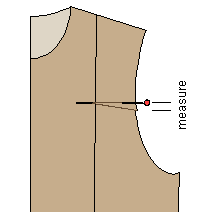
Check that the shoulder seam goes along the center of the
shoulder and that the shoulder tip of the garment is in the middle of
the shoulder. If there is
too much volume at the front armscye , as in the picture, fold
a pleat at the armscye and close it with a pin. Then measure the width
of the pleat and
subtract the amount from the
back length measurement.
Please note that in the picture only half of the pleat
width has been marked. You have to subtract from the back length the measurement
of the whole width of the pleat i.e. the width of the pleat when opened.
If there is
too much volume at the back armscye (when the shoulder seam is
at place), fold accordingly a pleat at the back armscye, measure the width
of the pleat and
add the amount to the
back length measurement.
This sounds straight and you may think that the the corrections
should be done vice versa, but this is what you have to do, believe me.
If
bust apex of the garment is too high or too low, change the
bust height measurement accordingly.
After joining the sleeves to the muslin
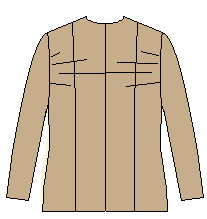 Sew
sleeves. If you needed to make a pleat at the front or the back armscye,
fold a corresponding pleat at the front or the back of the sleeve caps.
Join sleeves to the shell. If the garment is too tight at the back, as
in the picture, unravel some of the back seams of the sleeve caps and
measure the amount you have to add to your
back width measurement. Sew
sleeves. If you needed to make a pleat at the front or the back armscye,
fold a corresponding pleat at the front or the back of the sleeve caps.
Join sleeves to the shell. If the garment is too tight at the back, as
in the picture, unravel some of the back seams of the sleeve caps and
measure the amount you have to add to your
back width measurement.
Make sure that the waist seam of the muslin is in place.
If it is too high or too low, change
waist height and
back length accordingly. Be careful not to change waist height
and back length with different amount because it might change the direction
of the shoulder.
Patterns
Normally the patterns for a basic sloper are more or less
like in
picture 1 . Front and back shoulders slope downwards to shoulder
tip. Armscyes curve inward. Back armscye can be rather straight but should
never bulge outward or curve strongly inward.
-
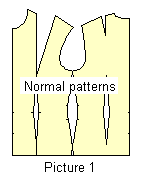

If the pattern is like in
picture 2 i.e. front armscye curves strongly inward and back
armscye bulges outward, back width is too much. Measure back width anew.
Please note that this measuring error causes the garment to be too loose
at back and too tight at front. Therefore the situation cannot be corrected
by only reducing width of back pattern. The patterns must be redrawn using
the correct back width measurement.
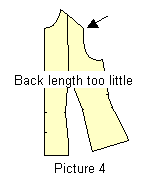
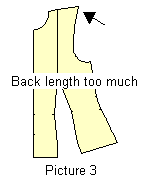 If
waist height in relation to back length is wrong, the result is either
a shoulder which slopes to wrong direction (
picture 3 ) or which is too steep (
picture 4 ). If
waist height in relation to back length is wrong, the result is either
a shoulder which slopes to wrong direction (
picture 3 ) or which is too steep (
picture 4 ).
If you measure waist height as instructed in the PatternMaker
measuring instructions i.e. double around back neck and divide the result
by two, there seldom is any error in waist height. Therefore the error
usually is in back length.
If shoulder slopes in wrong direction (
picture 3) back length is too much, if it is too steep (
picture 4 ), back length is too little. Check the amount to be
corrected in the measurements sewing a muslin and using instructions above. When
you have the correct back length measurement, please look to which point
at your neck it has be be measured from the waist to be measured correctly.
If the subject stand in a very upright, military position
with bust out and abdomen in, also waist height may be too much. Please
make sure that the subject stands in a relaxed position when she is being
measured.
A measuring case
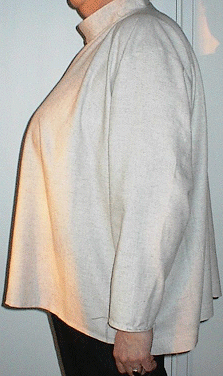 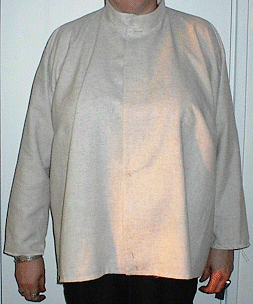
Here you have a blouse sewn without waist darts and with
dropped sleeves. You can see that the hem of the garment is not horizontal.
Furthermore there is too much fabric at the front armscye, which causes
wrinkles at the armscye.
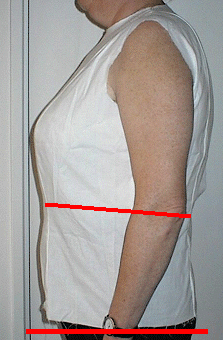 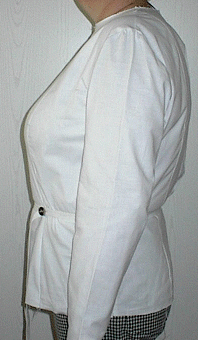
In this case two measurements have been taken incorrectly:
waist height and back length. You notice this when looking at the muslin
sewn with the basic bodice patterns (refer to the picture to the left
picture above). The waist and the hem of the bodice are not horizontal.
You have to add waist height and back length, but not with same amount.
Please notice that you should not correct this kind of a situation by
just adding length to front and back hem.
When fitting the basic bodice, mark the waist line on the
muslin with pencil or basting. Put an elastic around the subjects waist
and check that the waist line marked on the bodice goes along the elastic
at the subject's waist. If not, measure the differences and change the
measurements accordingly.
The shape of the armscye is dependent on the proportion
of waist height and back length. If waist height is too little compared
with back length, as in this case, front shoulder is too straight. This
kind of a situation is illustrated in picture 3 above.
Following changes were made in the measurements and the
bodice seems OK now (refer to the right picture above):
- 3 cm/1.2" was added to waist height and
- 1.5 cm/0.6" was added to back length
Correct patterns can look odd
In some cases a steep shoulder may be due to the subject's
body shape. This is the case if the subject has a very prominent bust.
And vice versa, if a subject has a very flat bust and/or a very round
back, the shoulder can be rather straight.
Thus, there are cases, where the patterns are all right
even if they look "odd". When the patterns are drawn according
to a person's own measurements, they should not be compared with patterns
drawn according to "normal" or "average" measurements.
If you
get an
error message :
value out of range in line …
coord (32,33,sqrt(op*op-oke*oke),-oke);
measuring error is so drastic that the program is unable
to draw the patterns at all. Front shoulder does not meet armscye line.
Then either back length is too little or waist height too much. It may
also be that shoulder length has some influence: shoulder length may be
too short.
Also, in some other cases there may be reason for
checking shoulder length measurement. If shoulder is too short,
there will be a corner inward where front and back shoulder meet at shoulder
tip and vice versa.
| ![]() Site
Map
Site
Map

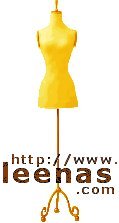


 Sew
sleeves. If you needed to make a pleat at the front or the back armscye,
fold a corresponding pleat at the front or the back of the sleeve caps.
Join sleeves to the shell. If the garment is too tight at the back, as
in the picture, unravel some of the back seams of the sleeve caps and
measure the amount you have to add to your
back width measurement.
Sew
sleeves. If you needed to make a pleat at the front or the back armscye,
fold a corresponding pleat at the front or the back of the sleeve caps.
Join sleeves to the shell. If the garment is too tight at the back, as
in the picture, unravel some of the back seams of the sleeve caps and
measure the amount you have to add to your
back width measurement. 


 If
waist height in relation to back length is wrong, the result is either
a shoulder which slopes to wrong direction (
picture 3 ) or which is too steep (
picture 4 ).
If
waist height in relation to back length is wrong, the result is either
a shoulder which slopes to wrong direction (
picture 3 ) or which is too steep (
picture 4 ).



